Youth Care Treatment Center and school has helped teens with bipolar disorder all over the United States for 30 years. Our unique approach is based off of solid morals and beliefs to help adolescents be successful in turning their lives around.
Understanding Bipolar Disorder
Learn about bipolar disorder
Bipolar and related disorders, which include an exceptional amount of emotional highs and lows, are mental health conditions that can be tremendously distressing on an individual to a point where his or her daily functioning can be impacted if the correct treatment is not obtained. There are three forms of bipolar disorder, which include the following:
Bipolar I: Bipolar I, which is known to be the most severe of the three, includes both manic and depressive symptoms. In order to receive this diagnosis, a young person must experience at least one manic episode, which either precedes or is followed by a major depressive episode or a hypomanic episode. When children and adolescents are suffering from bipolar I disorder, they struggle with significant mood fluctuations that can result in immense turmoil.
Bipolar II: Children and adolescents who suffer from bipolar II disorder do not experience manic episodes, but instead experience both major depressive and hypomanic episodes. The mood disturbances that are characteristic of bipolar II can lead to upheaval in a child’s life, yet he or she will not experience the same level of serious detriment that can arise when one is suffering from bipolar I disorder.
Cyclothymia: This form of bipolar disorder, which is known to be the mildest, includes prolonged depressive and hypomanic episodes. With constant changes in mood occurring not nearly as frequently, this type of bipolar disorder is more pervasive and does not cause the same distress that comes with bipolar I or II.
Treatment for each of these types of bipolar disorder is available and is highly effective in helping young people learn to manage their symptoms so that future detriments can be avoided.
Statistics
Bipolar disorder statistics
Since bipolar disorder has only been recently recognized by mental health experts as a disorder that can develop in children, further research on its prevalence is required to help determine how many children meet the diagnostic criteria for a diagnosis of bipolar disorder. However, research has shown that nearly 3% of children and adolescents grapple with symptoms connected to this mental health condition.
Causes and Risk Factors
Causes and risk factors for bipolar disorder
The causes and risk factors that may impact the development of bipolar disorders are summarized in the following:
Genetics: Studies have shown that those with a family history of bipolar disorder are predisposed to possibly showing symptoms at some point in their lives. Those children who have a parent with bipolar disorder are especially more likely to develop this disorder, with rates noted as being between 15% and 25%.
Environmental: Specific environmental triggers can bring about the manifestations of symptoms of bipolar disorder. Research has shown that trauma or sudden life changes can cause the onset of bipolar disorder symptoms when a genetic predisposition for this drug is present. In addition, abusing alcohol or drugs can elicit the development of symptoms when one possesses a genetic predisposition for bipolar disorder.
Risk Factors:
- Experiencing abrupt life changes
- Use or abuse of drugs and/or alcohol
- Family history of bipolar disorder or other mental health conditions
- Exposure to trauma
Signs and Symptoms
Signs and symptoms of bipolar disorder
Because there are three different types of bipolar disorder, the signs and symptoms of this condition will vary from individual to individual. When obtaining treatment, it is imperative to mention any and all symptoms that are being displayed so that the correct diagnosis can be made and the right treatment can be provided. The signs and symptoms that might signify if an individual is battling with a type of bipolar disorder can include:
Behavioral symptoms (depressive episode):
- Self-injury
- Suicide attempts
- Difficulty adhering to responsibilities/roles
- Withdrawal or isolation from friends and/or loved ones
Behavioral symptoms (manic episode):
- Acting as if one’s abilities are more impressive than others
- Rapid speech
- Poor task completion
- Hypersexuality
- Engaging in impulsive / risky behaviors
- Lack of focus while in conversation
- Acting out in an aggressive manner
Physical symptoms (depressive episode):
- Rapid weight gain or loss
- Disturbed sleep
- Low energy
- Fluctuations in appetite
Physical symptoms (manic episode):
- Increase in body temperature
- Insomnia or hypersomnia
- Seemingly little need for food
- Inability to remain still
Cognitive symptoms (depressive episode):
- Slowed thought processes
- Hallucinating
- Difficulty making good decisions
- Poor concentration
Cognitive symptoms (manic episode):
- Fleeting ideas
- Inability to maintain focus
- Rapid thought processes
- Impulsive thoughts
Psychosocial symptoms (depressive episode):
- Feeling worried constantly
- Feeling inexplicably shameful or guilty
- Decreased interest in pleasurable things
- Feeling worthless
- Having low self-esteem
Psychosocial symptoms (manic episode):
- Elevated mood
- Having a grandiose sense of self
- Experiencing emotional excitability
- Ongoing agitation
- Increased irritability
Effects
Effects of bipolar disorder
Treatment is often required in order for an individual to restore him or herself to a normal state of functioning when bipolar disorder is present. When left untreated, the effects of bipolar disorder can include:
- Suicidal ideation
- Suicide attempts
- Increased interaction with law enforcement
- Self-injury
- Isolation from friends and loved ones
- Substance use or abuse
- Disciplinary action or failure at school
- Increased conflict within interpersonal relationships
Co-Occurring Disorders
Bipolar disorder and co-occurring disorders
It is not uncommon for other mental illnesses to co-occur alongside bipolar disorder. Some of the most common co-occurring disorders in those who struggle with bipolar disorder include:
- Attention-deficit/hyperactivity disorder (ADHD)
- Intermittent explosive disorder (IED)
- Oppositional defiant disorder (ODD)
- Sleep disorders
- Anxiety disorders
- Eating disorders
- Substance use disorders








